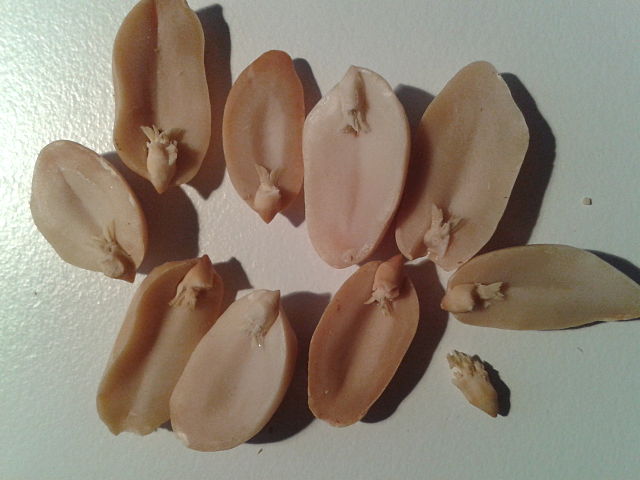A cotyledon is a "seed leaf" - a significant part of the embryo within the seed of a plant, and is formally defined as "the embryonic leaf in seed-bearing plants, one or more of which are the first to appear from a germinating seed." Botanists use the number of cotyledons present as one characteristic to classify the flowering plants (angiosperms): species with one cotyledon are called monocotyledonous ("monocots"); plants with two embryonic leaves are termed dicotyledonous ("dicots").
Cotyledon from a Judas-tree (Cercis siliquastrum, a dicot) seedling
Comparison of a monocot and dicot sprouting. The visible part of the monocot plant (left) is actually the first true leaf produced from the meristem; the cotyledon itself remains within the seed
Peanut seeds split in half, showing the embryos with cotyledons and primordial root
Two-week-old Douglas fir (a conifer) with seven cotyledons
An embryo is the initial stage of development for a multicellular organism. In organisms that reproduce sexually, embryonic development is the part of the life cycle that begins just after fertilization of the female egg cell by the male sperm cell. The resulting fusion of these two cells produces a single-celled zygote that undergoes many cell divisions that produce cells known as blastomeres. The blastomeres are arranged as a solid ball that when reaching a certain size, called a morula, takes in fluid to create a cavity called a blastocoel. The structure is then termed a blastula, or a blastocyst in mammals.
A male human embryo seven weeks after conception (nine weeks gestational age)
Embryos (and one tadpole) of the wrinkled frog (Rana rugosa)
Mouse and snake embryos
The inside of a Ginkgo seed, showing the embryo








